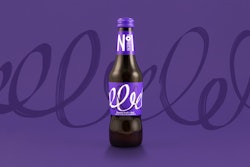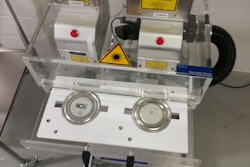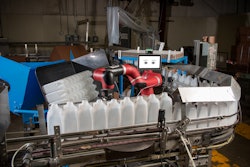New package design—from initial concept to full-scale production—can oftentimes be a long and laborious process, involving research, 2D sketches, CAD drawings, structural analysis, buy-in from stakeholders, prototypes, focus groups, and more. At any point, designers may need to take a step back in the process to tweak or rework a design. All of this can be costly and can considerably delay a product’s launch into the marketplace.
Mary Kay, a 55-year-old multilevel marketing company that offers skincare, fragrance, and color cosmetics products, has a long history of innovation, holding more than 1,400 patents for products, technologies, and packaging. While not sold on store shelves, Mary Kay’s more than 200 SKUs still rely heavily on packaging design to enhance its products and woo female consumers. Product samples and catalogs full of enticing product images are essential tools for the more than 3.5 million beauty care consultants who sell Mary Kay products in 36 countries worldwide.
Competition in the cosmetics space is stiff, making speed to market just as vital for Mary Kay as for any retail brand owner. In 2007, the company’s design staff implemented Solidworks® Professional 3D design software from Dassault Systemes to provide them with advanced product development tools. Yet, according to Mary Kay Senior Industrial Designer Jenny DeMarco Staab, requests for improved visualization of design concepts and demand for higher levels of realism in design imagery continued.
In 2012, Mary Kay added to its software design toolkit Dassault’s Solidworks Visualize® photorealistic imaging software, which was instrumental in the successful launch of its Fearless Collection of fragrances in Brazil in 2016. With Solidworks Visualize, Mary Kay was able to accelerate approvals of the Fearless Collection package design concept, leverage a rendering of the package for internal reviews, and reduce packaging development time by 50%.
Greater realism equals faster approvals
Mary Kay’s first software product from Dassault, Solidworks Professional 3D, is “basically Solidworks CAD,” according to Brian Hillner, Solidworks Product Portfolio Manager. “It’s design software that allows the user to very quickly and easily create 3D shapes and engineering components. While you can apply materials like plastic, wood finish, metal, and glass, as well as others, the results aren’t quite photoreal. Even screenshots are not photorealistic.”
This lack of realism greatly hindered Mary Kay’s designers in getting approval on designs in a timely manner. “Solidworks Professional 3D provided us with an efficient tool for designing products and getting things done, but we continued to have issues involving the difficulty key team members experienced in extrapolating design concepts from CAD images or 2D drawings,” says Staab. “It was hard for marketing and our international team to grasp concepts, and it took additional time to create physical models, both of which slowed down approvals.”
Notes Hillner, physical models based only on CAD drawings may often require numerous iterations. “For example, you might get a sample back and say, ‘I should have made the wall thickness two millimeters instead of four, because now the bottle looks so thick and clunky, and it has really strange refractions in this particular area of the glass,’” he says. “Then you have to go back to your manufacturing team and have them prototype another sample, and then the new prototype might be closer, but still not what you want.” By then, you’ve lost time and money.
In 2012, as Staab was evaluating various software products that could provide a more realistic rendering of a package design, she learned about Solidworks Visualizer at a Dassault Solidworks World Conference and Exhibition. “What really sold me on Solidworks Visualize software was the ‘glass’ quality—how real it makes glass bottles look,” she stresses. “We do a lot with glass and plastics, and we need a tool that provides the most photorealistic images possible. With the other packages, the glass quality was really not there, so we chose to standardize on Solidworks Visualize.”
Described by Dassault as “a camera for your CAD data,” Solidworks Visualizer allows the user to import a CAD drawing and add a virtually endless array of materials, settings, colors, and other features. For example, for a glass bottle, the user can create a very specific glass with a certain refraction rate and with a precise level of roughness or color, or they can add scratches on the glass or add what’s called a bump map, which gives the appearance of texture on the glass, among many other characteristics.
Particularly important in rendering a photorealistic image is what Hillner says is Solidworks Visualize’s physically-based ray-tracing engine. In computer graphics, ray tracing is a rendering technique for generating an image by tracing the path of light as pixels in an image plane and simulating the effects of its encounters with virtual objects. “What you see on your screen in Visualize is exactly what you’d get if you physically prototyped the package design,” he says.
So, in the case where a designer may not like the look of a four-millimeter-thick glass bottle when they see it in Visualize, they can move it back into the CAD software, make the changes, check for manufacturability, and then import it back into Visualize to see how the changes have affected the appearance of the package—in real time. Explains Hillner, “Because there’s a live link between Solidworks CAD and Visualize, Visualize is monitoring your CAD drawing, so if any changes are made to the drawing, as soon as you go back to Visualize, it will ask you if you want to import those new changes.”
According to Hillner, one of the biggest advantages of Visualize is its “blazing fast render speed.” This means once the user has finalized the design in Visualize, they can render—or create a picture of—the package in under a minute. With some other rendering software products, it can take from five to 10 minutes to create a simple, HD-sized image, he says. This can add up to hours per day of wait time if a user is constantly fine-tuning a design.
In May 2018, Dassault incorporated NVIDIA’s AI Denoiser (artificial intelligence denoiser) technology in its Visualize 2018 SP3 (service pack 3), which offers a render speed 10-times faster than what Solidworks Visualize was previously capable of.
Rendering of glass bottle design shines
At Mary Kay, in addition to using Solidworks Visualize software to secure packaging approval, the company leverages the software’s rendering power to support market research and sales activities. Says Staab, “Roughly 95 percent of the renderings we create are used for internal marketing approval and buy-in from our regions.
“We also use renderings to support focus groups, create posters, and improve the toolkit materials our sales associates use, which are critical for conducting successful in-home parties and sales events. Solidworks Visualize enables us to more quickly produce the imagery we need to support normal business operations, as well as handle unique and special projects, like a custom compact we developed for Mary Kay’s 50th anniversary in business.”
Another project where Solidworks Visualize was particularly instrumental in moving a complex package design through the approval process was the Fearless Collection. In fact, were it not for Solidworks Visualize, the bottle design for the product may have ended up on the scrap heap. The collection, in three fragrances—Live Fearlessly, Love Fearlessly, and Dream Fearlessly—was scheduled for launch in Latin America on International Woman’s Day, March 8, in 2016. During development of the bottle, Staab rescued the project after a design partner failed to grasp the concept.
“Our marketing group was not impressed with the work an outside contractor did on the Fearless Collection bottles,” she explains. “I worked with an intern to revamp the design and then used Solidworks Visualize software to present realistic renderings of our concept. We not only were able to get back on track, but we also cut our time to market by 50 percent.”
For the Fearless 50-mL glass bottle design, Solidworks Visualizer’s capabilities excelled. “The Fearless Collection packaging utilizes an asymmetrical design to support the idea that every woman is different, and no woman is perfect,” Staab explains. “The packaging uses a triangular crystal to mimic where a woman’s heart is located and stones that are not perfectly cut to symbolize all our imperfections. …Solidworks Visualize software helped tremendously in refining the design and securing approvals because of all the facets involved.”
The Fearless Collection ultimately was one of the most successful Mary Kay product launches ever.
Watch a video on Solidworks Visualize.



























